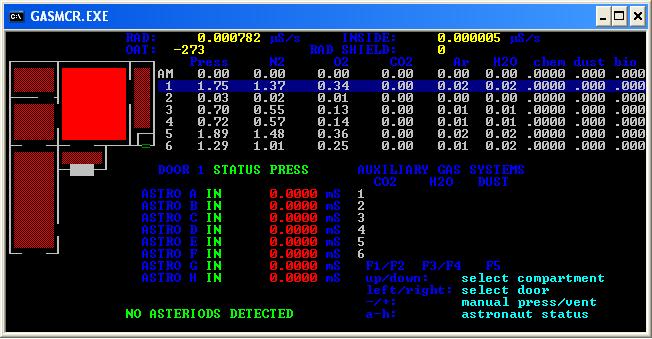Difference between revisions of "EECOM"
m (→Spacesim Adaptations) |
m (→History) |
||
| Line 4: | Line 4: | ||
==History== | ==History== | ||
| − | Historically, EECOM stood for Electrical, Environmental, and Communications systems, though the communications part of the job was moved to a station called [[INCO]] during the Apollo program. EECOM monitored electrical systems including the fuel cells and cabin pressure control systems from the [[ | + | Historically, EECOM stood for Electrical, Environmental, and Communications systems, though the communications part of the job was moved to a station called [[INCO]] during the Apollo program. EECOM monitored electrical systems including the fuel cells and cabin pressure control systems from the [[Mission Control]]. |
| − | + | ||
==Spacesim Adaptations== | ==Spacesim Adaptations== | ||
Revision as of 18:35, 21 August 2007
EECOM is a station in both the Habitat and Mission Control. The purpose of EECOM is to monitor the environmental data for the habitat, and to perform such operations as venting or pressurizing modules, scrubbing carbon dioxide, or adding oxygen. The Mission Control EECOM station is the only one capable of opening doors.
History
Historically, EECOM stood for Electrical, Environmental, and Communications systems, though the communications part of the job was moved to a station called INCO during the Apollo program. EECOM monitored electrical systems including the fuel cells and cabin pressure control systems from the Mission Control.
Spacesim Adaptations
Spacesim has a station called EECOM both aboard the Habitat and in Mission Control who is in charge of monitoring changes in cabin pressure, and regulating the atmosphere on board the Habitat to conform to nominal parameters. A seperate station for monitoring all electrical systems called Engineering was developed in 2007, and allows control over the Habitat Reactors and Power Buses.
The EECOM station also contains the warning lights for imminent space-junk collision, known as the "asteroid watch."
In Mission Control, the system also contains radiation monitors, to allow medical personal in Mission Control to monitor the safety of the crew in response to harmful levels of radiation.
Famous EECOMs
James Cooper
James Cooper was the habitat EECOM for the 2007-08 Mission to Borrelly. Unfortunately, the crew of that mission had several close encounters with abnormal pressures due to Mr. Cooper being colour-blind, and therefore unable to distinguish between the green "safe" and yellow "warning" lables the software placed on the monitor. Software rewrites are being planned to avoid further disaster.


